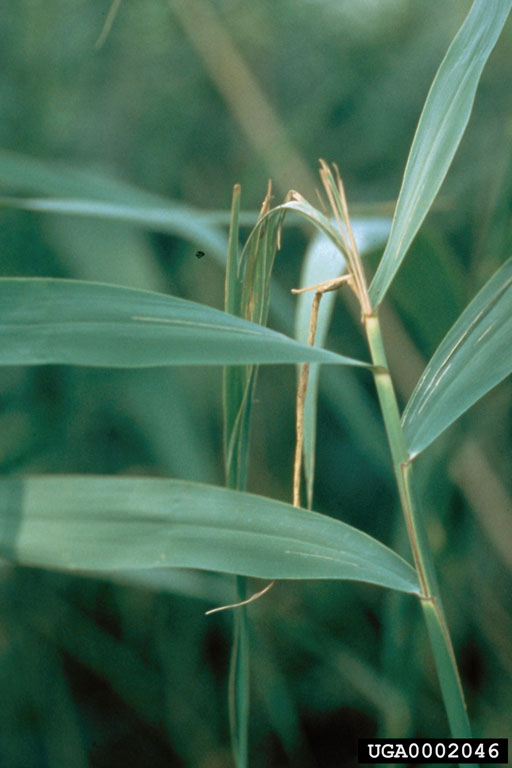
Lipara similis, a fly of the family Chloropidae (grass flies, shoot flies, gall flies), is native to Eurasia. It is found only on Phragmites australis (Common Reed). tt was first detected in an inspection of cargo from the Netherlands at a New York port in 1958. It was collected in Chesapeake Bay tidal Phragmites marshes near Tappahannock, and in Dameron Marsh, Northumberland County, Virginia in 2000. It is also widespread in coastal marshes in Rhode Island. This fly is probably now widespread in tidal marshes in the northeast US on native and invasive Phragmites. The adult fly is 3.3-4.6 mm long. The flies lay their eggs on the stems of reeds. The larvae move to the apical region of the stem, where they damage internodal tissues, creating a gall. Galls do not appear to greatly affect the growth or survival of the plants.
The picture is of a Phragmites stem, damaged by a gall formed by Lipara similis.